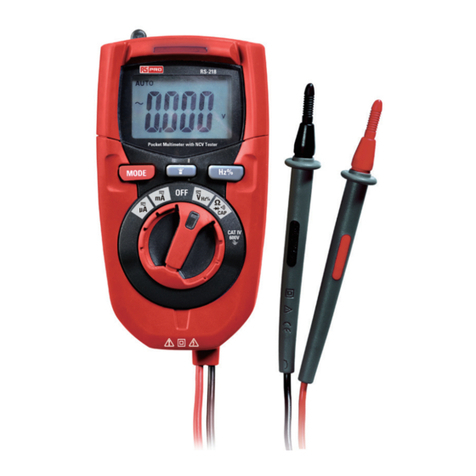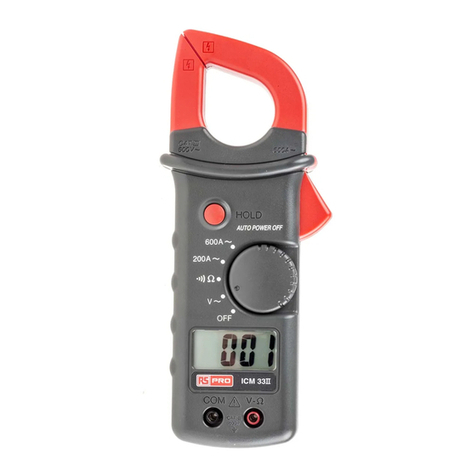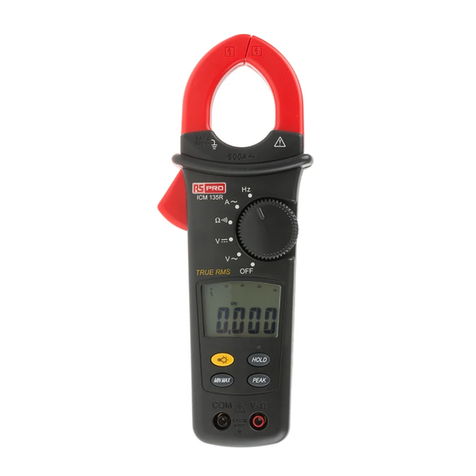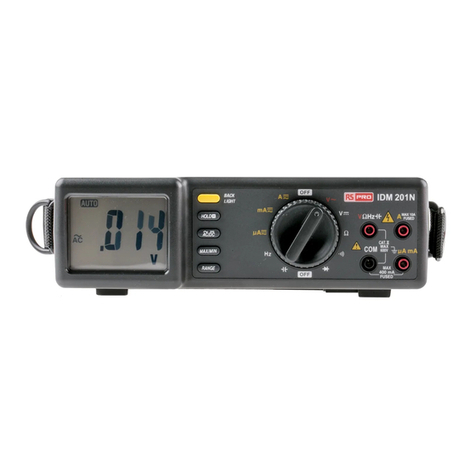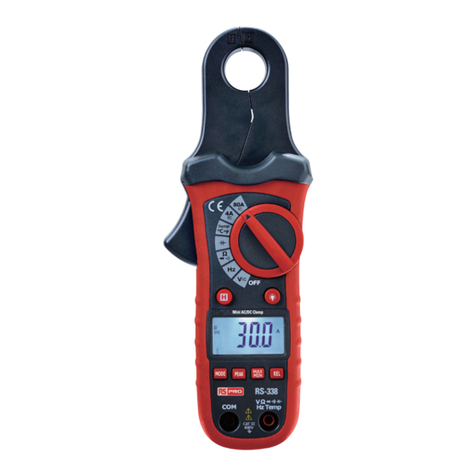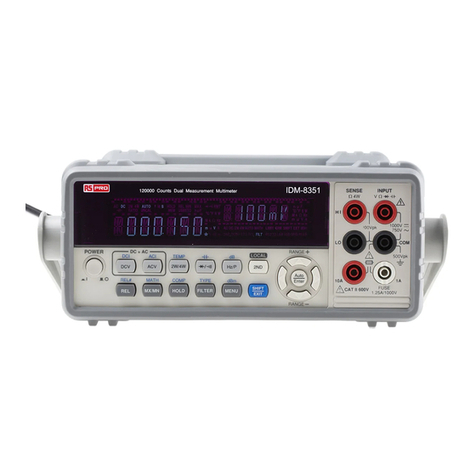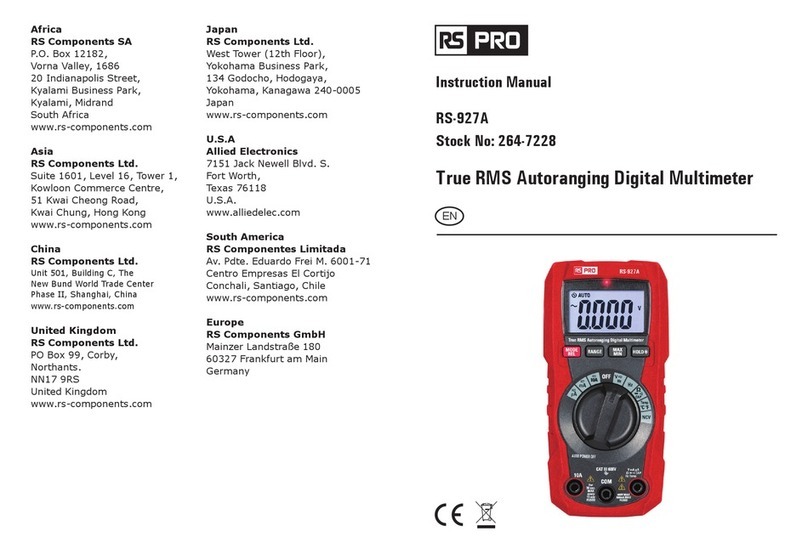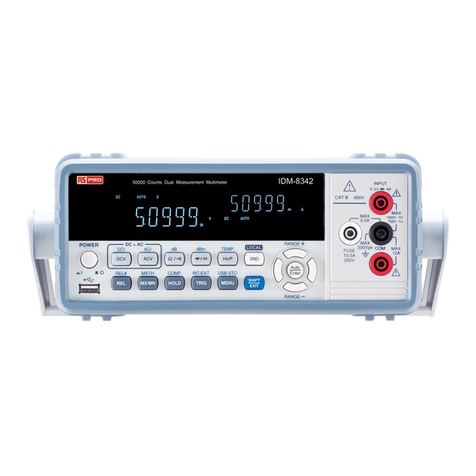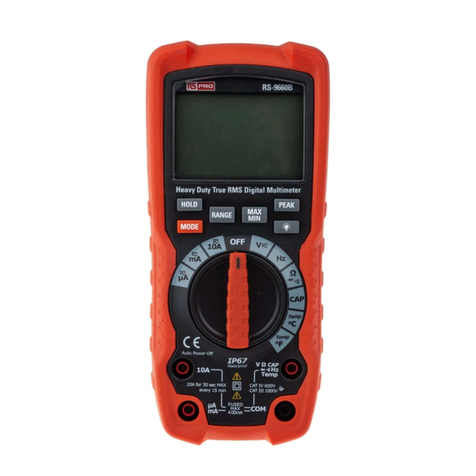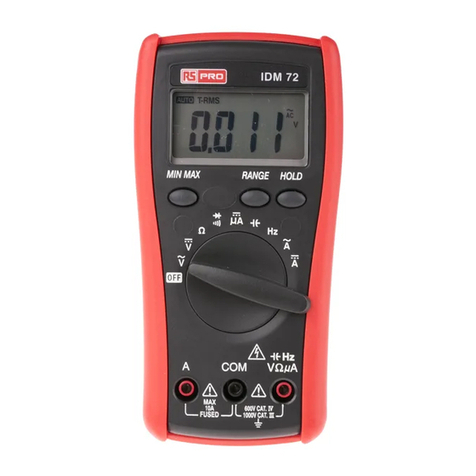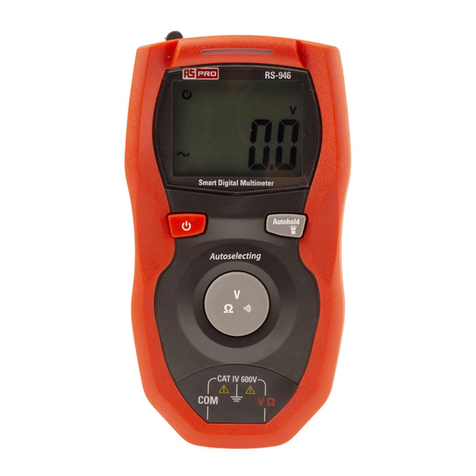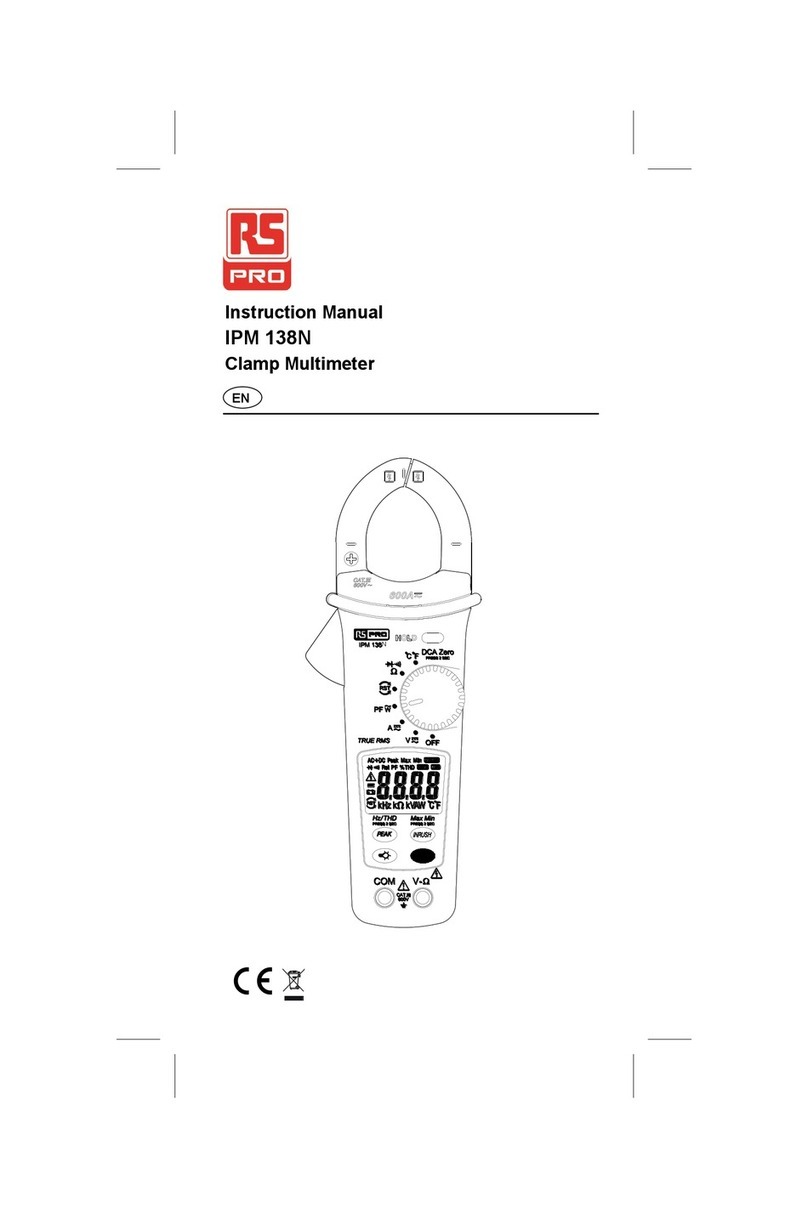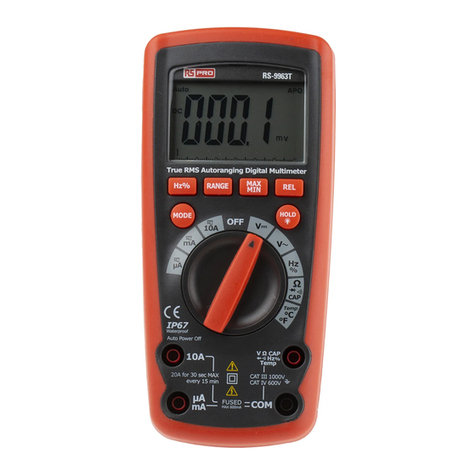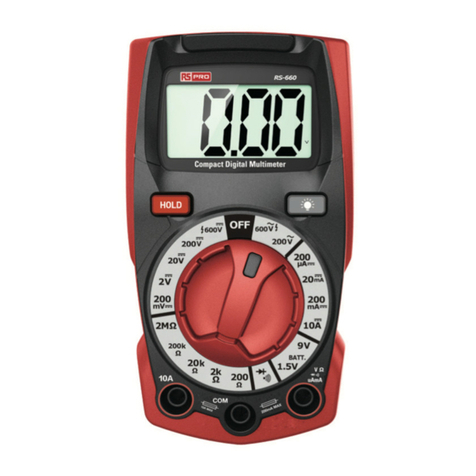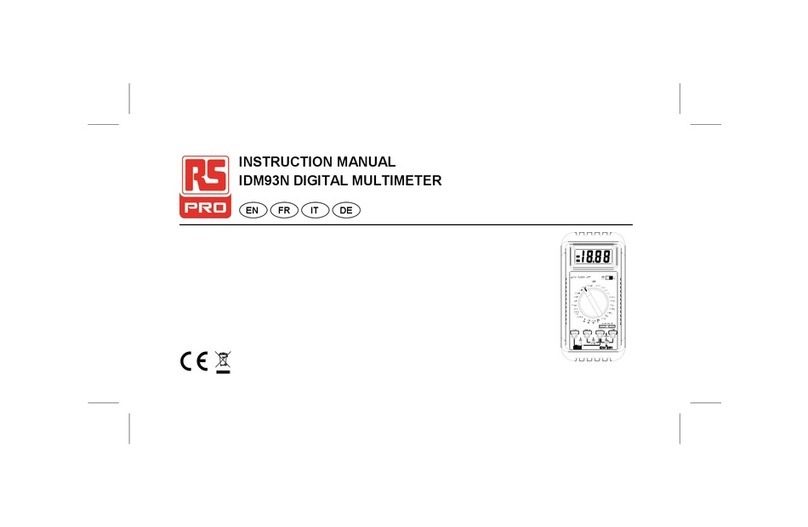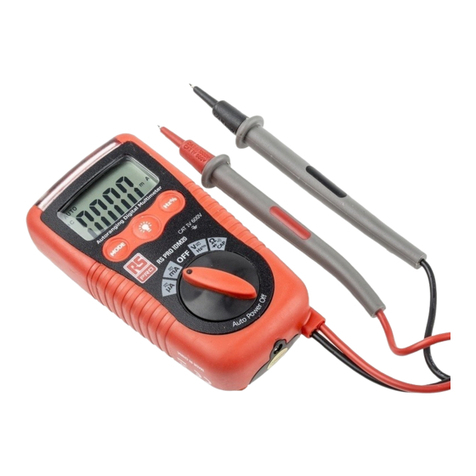
8 9
5.10 AC/DC Current Measurements
5.11 Resistance Measurements
• Insert the black test lead into the COM input jack and the red test lead into the V input
jack. If measuring DC voltage, touch the red test lead to the positive side of the circuit
and the black test lead to the negative side of the ncircuit.
• Touch the test leads to the circuit under test.
• Read the voltage on the LCD display.
WARNINGS: Observe all safety precautions when working on live circuits. Do not
measure current on circuits that exceed 1000V. Measurements in the 10A range
should be limited to 30 seconds maximum every 15 minutes.
• Insert the black test lead into the negative COM input jack.
• For current measurements up to 10A, set the rotary function switch to the 10A position
and insert the red test lead into the 10A input jack.
• For current measurements up to 600mA, set the rotary function switch to the mA
position and insert the red test lead into the μA mA input jack.
• For current measurements up to 6000μA, set the rotary function switch to the μA
position and insert the red test lead into the μA mA input jack.
• Momentarily press the MODE button to select AC or DC current. The AC “~” or DC
" ~"symbol will appear on the LCD display.
• Remove power from the circuit under test, then open up the circuit at the point where
you wish to measure current.
• Touch the test lead probes in series with the circuit being measured. For DC current,
touch the red probe to the positive side of the circuit and touch the black probe to the
negative side of the circuit.
• Apply power to the circuit.
• Read the current on the LCD display.
WARNING: Never test resistance on a live circuit.
• Set the rotary function switch to the Ω position.
• Press the MODE button until the “ Ω ” symbol appears on the LCD display.
• Insert the black test lead into the COM input jack and the red test lead into the input jack.
True RMS Digital Multimeter/ English
13/12/2017 Version No. 001
• Momentarily press the MODE button to select AC or DC voltage. The AC “~” or DC
" ~" symbol will appear on the LCD display.
• Insert the black test lead into the COM input jack and the red test lead into the V input jack.
• Touch the test lead probes to the circuit under test. If measuring DC voltage, touch the
red test lead to the positive side of the circuit and the black test lead to the negative
side of the circuit.
• Read the voltage on the LCD display.
5.8 Frequency and % Duty Cycle Measurements
5.9 Low Z Voltage
WARNING: Observe all safety precautions when working on live voltages.
• Set the rotary function switch to the V ~HZ % position.
• To select Frequency, press and hold the MODE button until the “Hz” symbol appears on
the LCD display. To select % Duty Cycle, press and hold the MODE a second time until
the “%” appears on the LCD display.
• Insert the black test lead into the COM input jack and the red test lead into the V input jack.
• Touch the test lead probes to the circuit under test.
• Read the frequency or % duty cycle on the LCD display.
• To return to AC voltage, press and hold the MODE button a third time until the “~ ”
symbol appears on the LCD display.
NOTE: The Frequency function can only be accessed when the meter is set to AC
voltage.
WARNING: Observe all safety precautions when working on live voltages.
Do not connect to circuits that exceed 600V AC/DC when the meter is set to Low Z.
Low Z is used when there is a suspicion of a “ghost” voltage. Ghost voltages are
present when non-powered wires are in close proximity to wires powered by AC voltage.
Capacitive coupling between wires make it appear that nonpowered wires are connected
to a real source of voltage. The Low Z setting places a load on the circuit, which
dissipates and greatly reduces ghost voltage.
• Set the rotary function switch to the Low Z position.
• Momentarily press the MODE button to select AC or DC voltage. The AC “~” or DC
" ~"symbol will appear on the LCD display.
True RMS Digital Multimeter/ English
13/12/2017 Version No. 001

